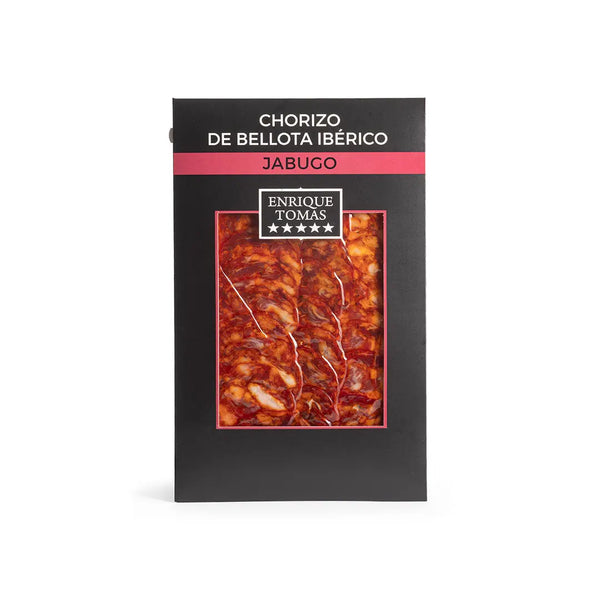
5 Differences between Jamón and Lacón
One of the most common questions in the world of ham, especially for the curious, connoisseurs, and lovers of pork products, is: Are "lacón" and ham the same thing? At Enrique Tomás, we're going to address all your doubts in this article.
Discover all the differences between "lacón" and ham and keep reading!
What is "lacón"?
"Lacón" is a Protected Designation of Origin product derived from white pigs, originating from Galicia and also from Asturias. It's produced from white pig breeds such as Large White, Celta, Landrace, and Duroc.
Among the varieties of "lacón," you can find the traditional Galician "lacón," but also another type that is unfortunately falling into oblivion: truffle-infused "lacón," which differs from the traditional version due to the inclusion of chopped truffles, brandy, and other spices during its elaboration process.
Typically, roasted "lacón" is enjoyed with Galician potatoes and "grelos" (turnip greens). It's truly a delight, although you probably already knew that. ;) But let's get to what generates the most intrigue. How does it differ from ham?
We'll unveil all the secrets about these two pork products. Not a single doubt left!
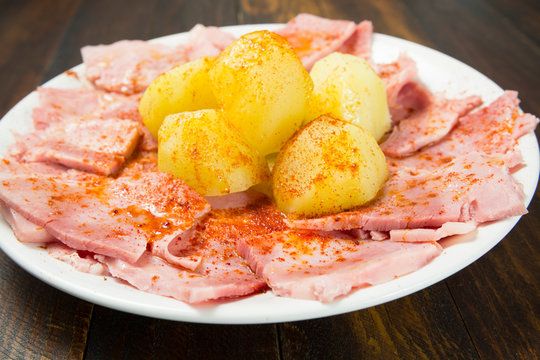
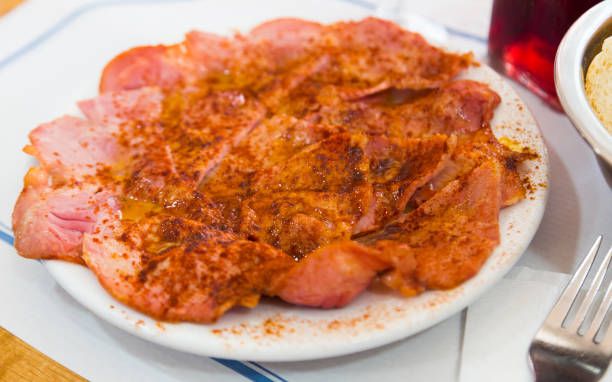
Main Differences Between Ham and "Lacón"
Although it only takes a few letters to differentiate ham from "lacón," the truth is that these two meats have distinct qualities and preparations.
Let's start with something very important: Iberian ham is completely different from "lacón." Indeed, this delicious type of ham comes from, as the name suggests, the Iberian pig, whereas "lacón" is produced from white pig breeds.
On the other hand, Serrano ham has more similarities with "lacón," as both products are made from white pig breeds.
However, "lacón" and cured ham don't share much more than that. At Enrique Tomás, we're ham experts, so we know the ins and outs of pork products. We can assure you that the differences between the two are many: the cut, curing process, exact origin, price, and consumption method.
Next, we'll explain all these differences in detail.
The Cut
Ham is obtained from the hind leg of the pig, while "lacón" comes from the front leg, similar to the shoulder. Specifically, "lacón" is prepared using the piece that extends from the elbow to the hoof. This part is also known as the shoulder.
It's that simple, but it yields an extremely different result, which is noticeable in the final product. Pay attention: the slices of "lacón" are juicy, and the fat is distributed differently compared to ham.
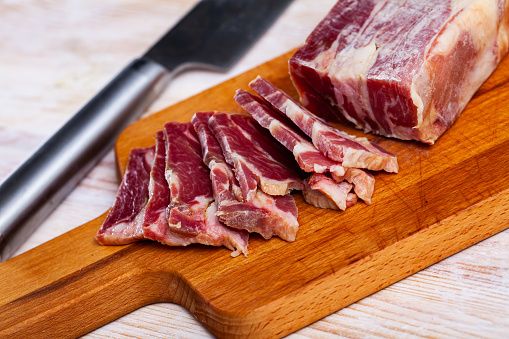 Cured "Lacón"
Cured "Lacón"
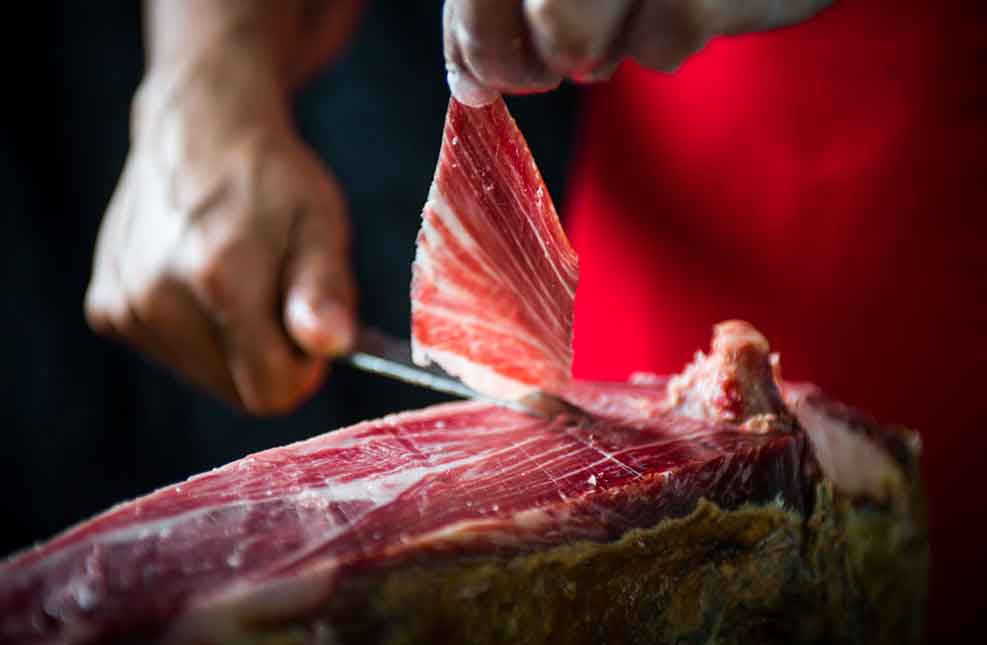 Cured Ham
Cured Ham
The Curing Process
Both ham and "lacón" require different curing and aging times. Moreover, the entire process of making "lacón" is generally shorter than that of ham.
This is because the curing time for Serrano ham ranges from 12 to 24 months, while "lacón" only needs 15 days of curing. In total, the preparation of "lacón" takes only 35 days.
And let's not even talk about the aging of acorn-fed ham, which can take anywhere from 24 to 38 months, but that's a whole other level.
If you're interested in this topic, don't miss the differences between Serrano ham and Iberian ham, I assure you that there are many differences despite their apparent similarity.
Origin
White pigs come from different countries: Duroc pigs from the United States, Large White pigs from the United Kingdom, and Pietrain pigs from Belgium.
Therefore, although all these breeds have been established in Spain for years, they are not necessarily geographically linked to a specific territory like Iberian pigs, which are only found in Spain and Portugal.
So, what about the origin of the final product?
Well, as we mentioned before, "lacón" comes from Galicia. On the other hand, Serrano ham with a Protected Designation of Origin comes from Trevélez, in the province of Granada, and there's also another type of Serrano ham with a Designation of Origin from Teruel.
Price
The production of ham involves more time and therefore, a higher cost.
On average, a very good ham can cost around €30 per kilogram, an excellent one around €60, and an extraordinary one around €120.
In contrast, a piece of good quality "lacón" weighing around 3 kg costs around €20, and its average price per kilogram is €6.
Check the prices of Serrano or Iberian ham pieces and the ham packets from Enrique Tomás in our online shop.
Consumption
Well, it's proven that the consumption of ham or shoulder is much higher than the consumption of "lacón." This is because "lacón" is mostly consumed within the country, while buying ham or shoulder is a more widespread practice in other countries: France, Germany, Belgium, the Netherlands, Sweden, and even across the Atlantic, Mexico and Chile are major enthusiasts of this delicacy.
At Enrique Tomás, we know very well that ham knows no borders. That's why we've been opening stores not only in Spain but also in Argentina, the United States, France, England, Mexico, Peru, and Puerto Rico for years. The demand in all these countries is high, and they appreciate a quality product like ours.

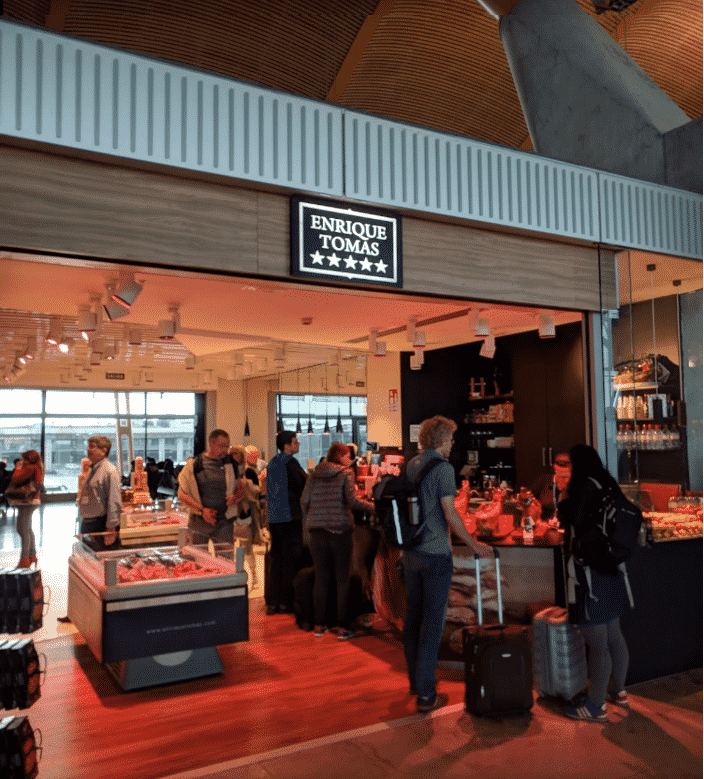

And Between "Lacón" and Cooked Ham, What Are the Differences?
With the differences between ham and "lacón" clarified, there's one last doubt to dispel: What about cooked ham? The similarity in color between these two products might deceive some, but in this case too, I assure you that they don't have much in common.
Given the significant disparity between the two, let's start with what they have in common: once again, they both come from white pig breeds.
And the Differences?
Well, sweet ham can come from both the hind legs and the front legs, whereas we've seen that "lacón" comes exclusively from the front legs. Additionally, cooked ham doesn't undergo the salting process, unlike the former, and during the drying phase, heat is applied to York ham, while this is not the case for "lacón."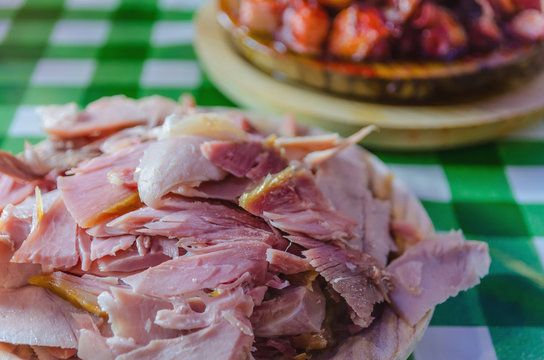
Don't miss out on all our exquisite products! Gran Reserva ham or shoulder, Iberian of Cebo, Bellota 50%, and Bellota 100%. In addition to Iberian loin, aged and semi-aged cheeses, and for a perfect pairing, also DOC and organic wines.
Visit our online store and get your favorite product!


